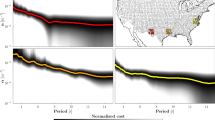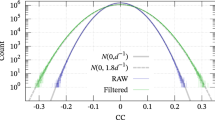Abstract
IN 1926 Ratcliffe and Barnett (Proc. Camb. Phil. Soc., vol. 23, p. 300) directed attention to an anomalous effect which they had observed when measuring the attenuation of wireless waves of 1600 m. wavelength from 5XX, the Daventry station of the B.B.C. They obtained an attenuation curve of the form shown in Fig. 1, which shows how the product (E × d) of the distance (d) and the electric intensity in the wave (E) varied as the distance (d) from the transmitter was increased. The falling portion (bc) of the curve represents, as is well known, attenuation of the waves due to losses produced by eddy currents flowing in the ground. The rising portion (ab) of the curve may be said to represent a ‘negative attenuation’ of the wave. At the time when the observations were made, no explanation of the negative attenuation could be given.
This is a preview of subscription content, access via your institution
Access options
Subscribe to this journal
Receive 51 print issues and online access
$199.00 per year
only $3.90 per issue
Buy this article
- Purchase on Springer Link
- Instant access to full article PDF
Prices may be subject to local taxes which are calculated during checkout
Similar content being viewed by others
Author information
Authors and Affiliations
Rights and permissions
About this article
Cite this article
RATCLIFFE, J., WHITE, F. Negative Attenuation of Wireless Waves. Nature 125, 926–927 (1930). https://doi.org/10.1038/125926b0
Issue Date:
DOI: https://doi.org/10.1038/125926b0
This article is cited by
Comments
By submitting a comment you agree to abide by our Terms and Community Guidelines. If you find something abusive or that does not comply with our terms or guidelines please flag it as inappropriate.



